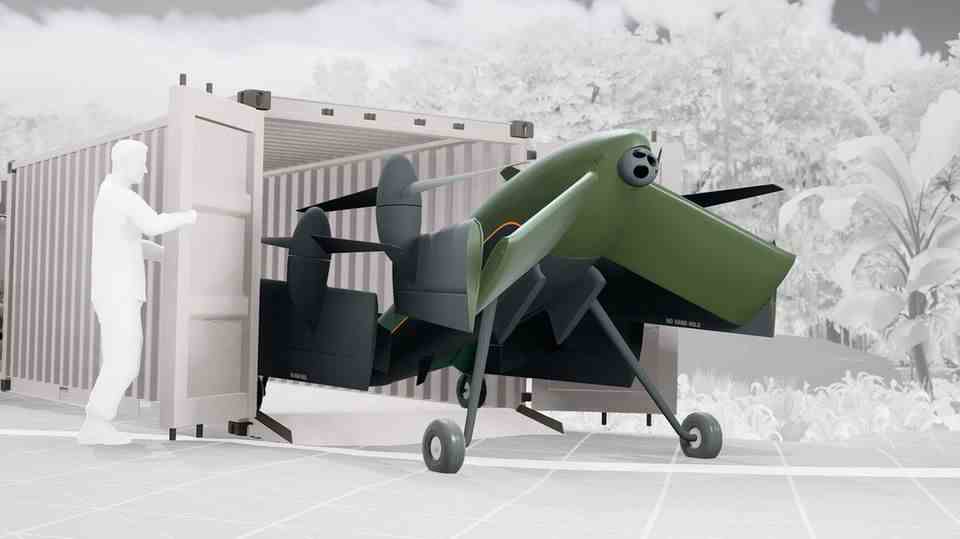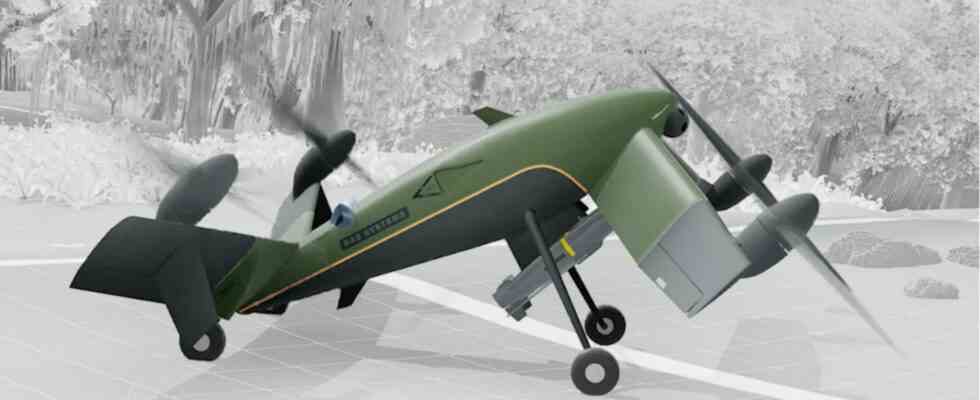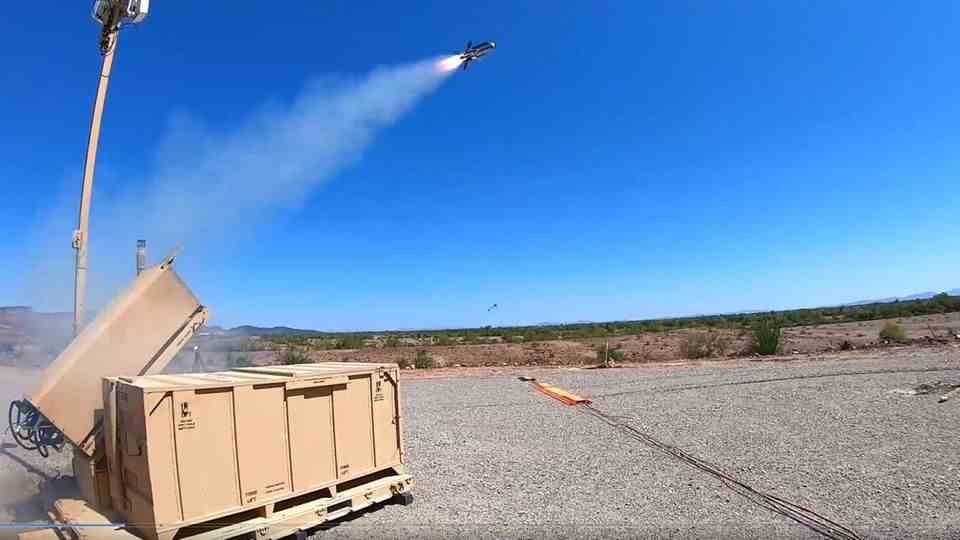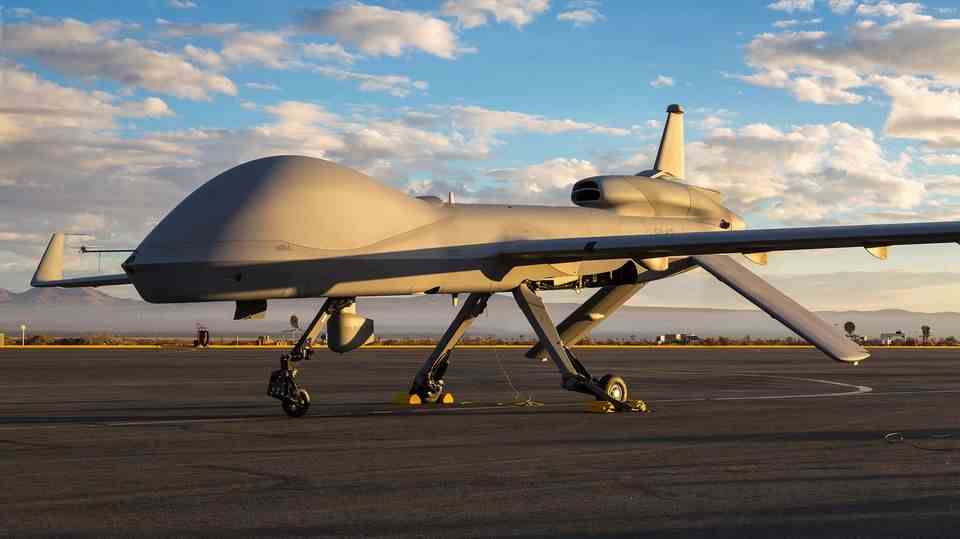Concept from Australia
Strix Battle Drone takes off and lands on its butt
The design looks very futuristic.
©PR
BAE-Systems has presented a vertical take-off drone. Just as revolutionary as the “Owl” is a conversion kit that turns old “dumb” bombs into modern precision weapons.
BAE Systems Australia has shown a first draft of its own combat drone. The Strix combines cost-effective production from the kit of existing modules and innovative take-off and landing technology. The drone is around 4.5 meters long and can transport a payload of 160 kilograms over a distance of 800 kilometers.
What makes it special is its ability to take off or land vertically. The Strix therefore does not need a runway. As a reminder, only smaller, short-range drones are quadcopters that land and take off like a small helicopter. But if more weight is to be transported over long distances, a drone must have gliding capabilities like an airplane. The Strix solves this by crouching forward on the ground, like a frog about to leap. It has two pairs of wings, each with two propellers. The slanted position and the staggered arrangement of the engines makes a “squat” take-off possible. By skilfully controlling the rotors, the front pair first pulls the drone up and then takes off vertically. The complex control of the individual propellers is done automatically.

Any truck can transport the 6 meter container.
©PR
Little logistical effort
The drone can launch from anywhere and does not require a rail catapult, which is also a common method of launching drones. In a video you can see that the drone will be housed in a standard container of 6 meters. The wings can be folded in, so the drone is only 2.4 meters wide. Then it only has to be rolled out and can be started. This form of autonomous use – here literally “out of the box” – without larger additional facilities on the ground is considered the key to the use of combat drones in war zones. “Ideally, Strix would operate as a mostly autonomous system most of the time,” said BAE Australia’s Mic Crump. “Take-off and landing and the transition from vertical to level flight are completely autonomous. Autonomous technologies are not intended to replace humans on the modern battlefield, but to complement them.”
Depending on the task, the drone can be equipped with various mission modules. For example for reconnaissance and target acquisition, but also for electronic warfare. Again, the Strix goes further than the competition, the modules can be easily swapped out from the outside.
In addition to Hellfire and Brimstone missiles, a newly developed guided missile, the Razor, can also be used. The concept of the Razor is almost more innovative than that of the drone. Razor itself consists only of a set of wings, a tail unit and a navigation system. This module is mounted on classic standard ammunition, so existing “dumb” free-fall bombs can be converted into smart precision bombs very cheaply.
Cheap concept
What is striking about the drone and the smart weapon upgrade kit is the great cost awareness of the project in terms of acquisition, operation and ammunition. It’s a lesson from the war in Ukraine. This shows that even modern wars can last a very long time and it is crucial to replace lost equipment in the long term.
The Strix currently only exists as a non-functional model and rendering, with production scheduled to start in 2026. The name means owl, and there is a demonic connotation to it. The silent night hunter is considered an ominous dead bird. The word Strix was synonymous with witch in the Middle Ages.
Source: BAE Systems




